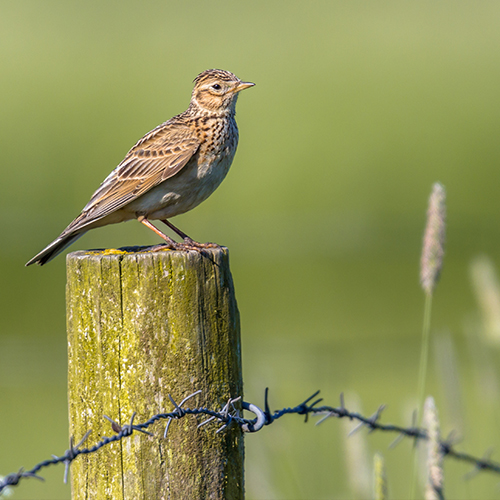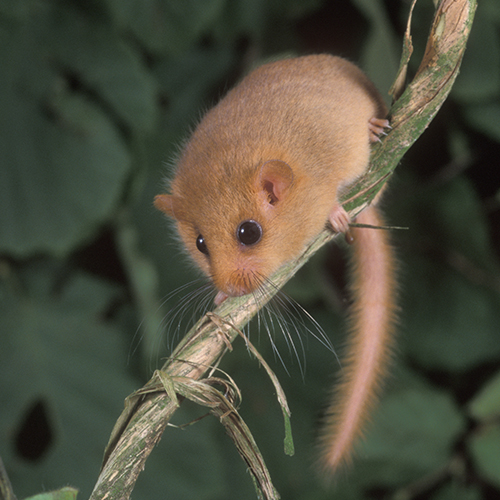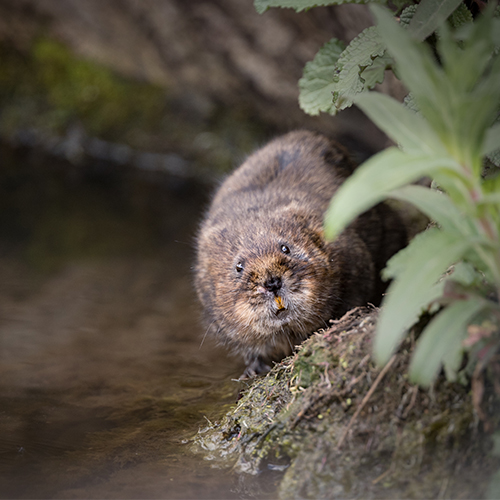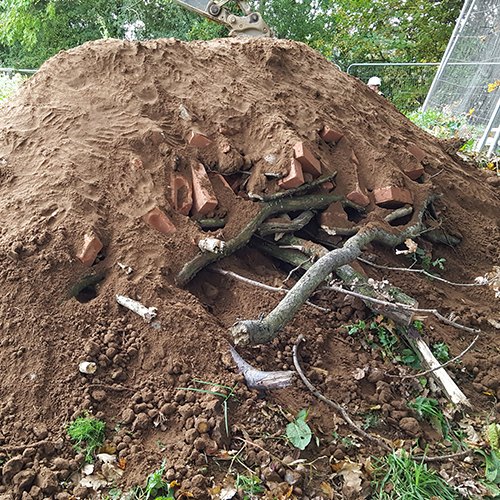EcologyOur ecologists are as passionate about service as they are about wildlife while ensuring legislation and compliance.
Ecology Services
Our ecologists are passionate about both wildlife and service, ensuring compliance while delivering practical, cost-effective solutions.
We help developers navigate legislation, protect biodiversity, and achieve 10%+ biodiversity net gain – balancing conservation with commercial success. Our team provides clear, proactive advice, from site surveys to habitat management, ensuring seamless project progression without delays or unexpected costs.
With expertise in ecological assessments, mitigation strategies, and habitat enhancement, we work efficiently to safeguard protected species and natural environments. Our collaboration with OASIS ensures ongoing habitat supervision and biodiversity monitoring.
For expert ecological support, contact us: eco@jba-landmarc.com / 01284 335 797
Surveys & Assessments
- Preliminary Ecological Appraisal (PEA) – Initial site assessment to highlight ecological features affecting development.
- Phase 1 Habitat Survey – Evaluates site potential for protected species, habitat enhancements, and legal compliance.
- Ecological Walkover Surveys – Quick assessments for pre-purchase agreements or site planning.
Protected Species Surveys
- Badgers – Surveys within 30m of a site to assess potential use under the Protection of Badgers Act 1992.
- Bats – Roosting, activity, dusk/dawn, and aerial tree inspections for all 17 UK bat species.
- Breeding & Wintering Birds – Surveys based on British Trust for Ornithology methods.
- Dormice – Habitat suitability assessments and monitoring via nesting tubes.
- Great Crested Newts – Identification of suitable water bodies for this European-protected species.
- Reptiles – Presence/absence surveys using artificial refugia.
- Water Voles & Otters – Identification of populations along waterways.
- White-Clawed Crayfish – Detection of native species impacted by invasive North American Signal Crayfish.
- Red Squirrels – Surveys to assess presence in remaining UK habitats.
- Invertebrates – Assess species assemblages and advise on habitat enhancements.
- Botanical Surveys – Identify all flora on-site, focusing on rare and endangered species.
Ecological Planning & Mitigation
- Ecological Design Strategies & Mitigation Plans – Detailed strategies to ensure biodiversity is maintained.
- License Documents – Applications to Natural England for protected species mitigation.
- Ecological Clerk of Works (ECoW) – On-site supervision to protect ecological habitats during construction.
- Habitat Creation & Site Maintenance – Establishing wildflower meadows, reptile hibernacula, and new habitats.
- Installation of Nesting Boxes – Bat and bird boxes to support wildlife and compensate for habitat loss.
Please see our ecology calendar below to ensure you are planning in advance to avoid costly delays. Contact our ecology team today: eco@jba-landmarc.com / 01284 335 797

Please download a copy of our ecology calendar to help you plan for survey season.
We can help you with all of the following:
Initial Ecological Walkover Survey/ Preliminary Ecological Appraisal
Initial assessment of a site predominantly for pre purchase agreements or to highlight any ecological features which could be of significance to a development.
Phase 1 Habitat Survey
The survey will assess the site potential to support protected and locally important species and habitats; make recommendations for enhancement, and highlight how features of ecological value should be protected during the works, including legal compliance where necessary. The survey will be conducted or verified by a full member of CIEEM.
Badger Surveys
Badgers are protected under their own specific legislation – the Protection of Badgers Act 1992. They are also protected under Schedule 6 of the Wildlife and Countryside Act 1981 (as amended). The survey will involve assessing the site and surrounding accessible areas up to 30m for potential use by Badgers.

Bat Surveys
There are seventeen species of bats resident to the UK. All of which are protected under the Conservation of Habitats and Species Regulations 2010 and the Wildlife and Countryside Act 1981 (as amended). Bat numbers are in decline due to loss of habitat and foraging area. Our surveys will identify how bats are using or roosting on site. Any trees will be assessed for bat roosting potential and how they may be used on site. Activity, Dusk and Dawn surveys can be undertaken to determine the level of use by bats on a site.
Building inspections can be undertaken to determine whether bats are using them as roosting sites. We are also able to provide Aerial tree roost inspections to determine the level of a roost in a tree.
Breeding Bird Surveys
The Breeding bird survey will conduct an assessment of a site for breeding birds based upon the British Trust for Ornithology’s strategic Breeding Bird Survey.
Wintering Bird Surveys
A wintering bird survey will identify a species composition of a site across the winter months and an estimated population size. The survey is undertaken on sites which may hold species of conservation concern during the winter period.

Botanical Surveys
Required to identify all flora on a site with a focus on identifying any rare or endangered plants or habitat.
Dormouse Surveys
Dormice are one of the UK’s most endangered mammals and are European protected. Surveys will identify suitable habitat and how they could be using the area. Nesting tubes can be distributed throughout suitable areas to identify if Dormice are present on site.
Great Crested Newt Surveys
Great Crested Newts are a European Protected Species and should be surveyed to detect if there are any suitable water bodies within.
Invertebrate Surveys
To undertake invertebrate surveys of the site to assess the assemblage of invertebrates and to advise on mitigation/enhancement requirements.

Red Squirrel Surveys
Red Squirrels are the only native squirrel species in the UK, found in an increasingly smaller area of the UK due to competition and diseases from their American cousins, the grey squirrel. We have successfully conducted Red Squirrel surveys throughout the UK, identifying Red Squirrels on a number of sites.
Reptile Surveys
There are six species of reptile which are legally protected in the UK. If a site is deemed to provide suitable habitat for reptiles, a reptile presence/absence survey is recommended. This involves artificial refugia being placed around the site and periodically checked eight times to determine if reptiles are present on site.
Water Vole & Otter Surveys
Water Voles and Otters were at an all time low in previous years but numbers are beginning to increase in certain areas throughout the UK. Surveys identify if either of the species are present along waterways. Both species are protected under Schedule 5 of the Wildlife and Countryside Act 1981 (as amended).
White Clawed Crayfish Surveys
White Clawed Crayfish are protected under Schedule 5 of the Wildlife and Countryside Act 1981 (as amended). Numbers of these species have been decimated in the past by the invasive non-native North American Signal Crayfish. In order to preserve this species surveys can be conducted on waterways to identify the presence of absence of the species.

Ecological Design Strategies/ Ecological Mitigation Plans & Reports
Ecological design strategy documents can be required by local authorities to identify how ecological mitigation will be implemented to a site and when. These complex documents detail mitigation for all protected species across a site to ensure that biodiversity is not lost on a site.
License Documents
If a protected species is found on site and will be effected by a development or works, then a license will be required, and this will also need to be sent to Natural England. This will detail how a protected species will be affected and possible mitigation measures. At James Blake Associates, with have a wealth of experience with producing licenses and successfully receiving approval of these on a variety of sites.
Ecological Clerk of Works
If a site has areas of sensitive ecological habitat that requires work, then having an ecologist present to oversee the works can be a requirement to ensure the safety of this habitat. Our ecologists are experienced with working on a variety of sites with contractors to ensure tasks can be completed and ecology protected.
Habitat Creation and Site Maintenance
Habitat creation can form a large part of ecological mitigation for sites where habitats may be lost. This can be in the form of creating wildflower meadows for invertebrates or hibernacula for reptiles. Creating new habitats provide the opportunity to encourage ecology into a development and can be at the centre of any development.
Installation of Nesting boxes
The installation of bat boxes, bird boxes and more, can be an integral part of ecological mitigation. Providing new habitat can encourage these species to use the site and mitigate for any loss of habitat that may be required.
INTEGRITY



